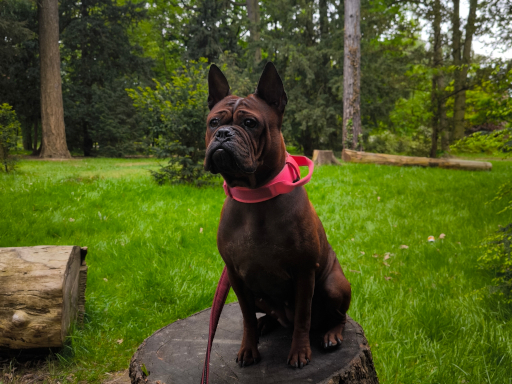Safe Summer with Your Dog
By Jacek
June 16, 2025
By Jacek
June 16, 2025

Summer is a time of increased activity, vacations, sunshine, and warmth for many of us. We’re more eager to spend time outdoors, go on long hikes, enjoy the beach, or head out of town. However, for many dogs, this season comes with increased risks — overheating, sunburns, dehydration, and skin injuries become real threats, not only on vacation but also in the concrete jungles of cities. That’s why it's especially important to take appropriate precautions during this time.
All dogs can suffer from heatstroke, but some breeds are particularly vulnerable. Contributing factors include:
The Chongqing Dog, with its short coat, no undercoat, black skin, muscular build, and shortened snout, falls into the high-risk group. However, this doesn’t mean Chongqings can’t enjoy summer activities. A little common sense is all it takes to make the most of summer with your four-legged friend.
While we may think long-haired dogs suffer more in the heat, the reality is different. A dense undercoat works like insulation — it protects from both cold and excessive summer heat. Think of it like home insulation. It creates an air layer that limits heat exchange with the environment and slows down deep tissue warming.
In humid conditions, however, it can hinder skin cooling and trap dirt and parasites. Breeds from hot regions — like the Chongqing Dog, Xoloitzcuintli, Thai Ridgeback, or Peruvian Hairless Dog — often have sparse, short fur or none at all. This adaptation helped with faster heat and moisture release.
Short fur comes with risks too: no UV protection, more mechanical injuries and burns, and faster evaporation of sebum — the skin's natural barrier.
Summer care tips for owners:
Breeds without undercoats adapted to specific climates. Today, it’s up to their guardians to help them adjust to modern living conditions.
The Chongqing Dog survived for centuries in the hot, humid climate of Sichuan — without air conditioning, cooling vests, UV filters, or special diets. How? Instinct:
Today, concrete and asphalt have replaced nature. Now it’s our responsibility to provide the comfort that nature once did.
The golden rules of summer walks apply everywhere — the beach, the mountains, the park, or city streets:
Dogs don’t really sweat — their sweat glands are only in paw pads and noses. Their main cooling mechanism is panting, which evaporates moisture from the mouth and tongue, cooling the blood. It’s effective but quickly overwhelmed in hot, humid air.
Don’t spray your dog with a hose or toss them in a pool — sudden cooling can cause thermal shock, circulatory issues, and panic. Sadly, this still happens.
Instead, use safe methods:
Again — don’t use cold water. Sudden skin cooling constricts blood vessels, making it harder to release internal heat.
Dark skin absorbs UV better — meaning it heats up faster. Burns may not always be visible, but the risk is real.
Especially vulnerable areas:
To protect your dog, use:
For irritated paw pads:
Important: Zinc is toxic if ingested — secure paws with a bandage or bootie if your dog licks. Always consult a vet for injuries.
Don’t use human cooling ointments with menthol, camphor, or eucalyptus — these monoterpenes are toxic to dogs, irritating to skin and mucosa, and easily absorbed.
Use only pet-safe products.
Common symptoms:
What to do:
Summer isn’t the time for pushing limits or breaking records – it’s a time for vigilance and care. Your dog won’t tell you something’s wrong – it’s your job to notice.
Ensure shade, water, and skin and paw protection. Skip a workout if it’s too hot – that’s not weakness, that’s responsibility.